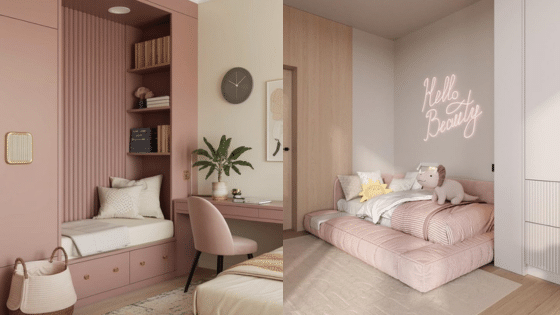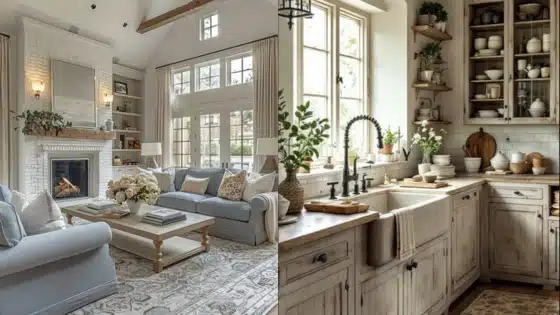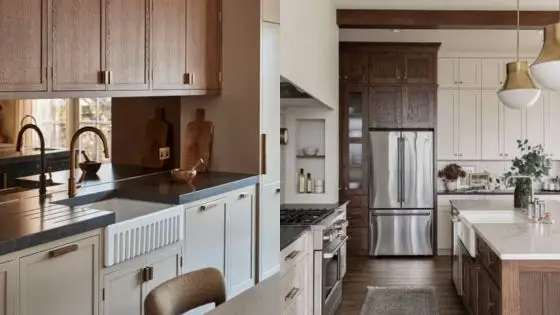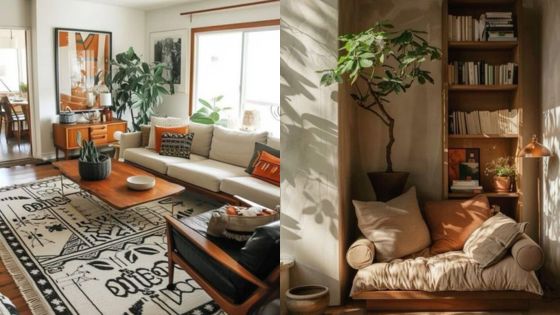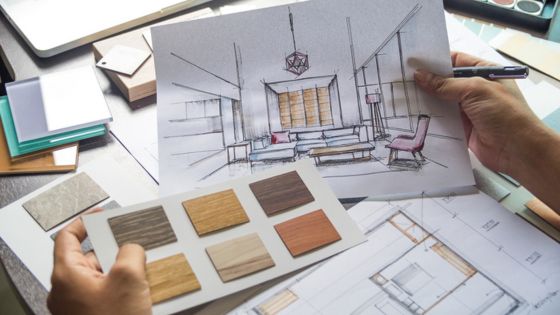Your floors bear the burden of all steps taken, all the spills, and all the furniture sent skidding upon them. They’re the foundation of your home’s beauty, yet one careless moment can leave a scratch, dent, or stain that never truly disappears. Repairing or replacing flooring is noisy and stressful. Besides, it is extremely costly.
The good news? You can avoid those heart-sinking moments with a few simple habits and the right protective products.


In this guide, we’ll share the most effective floor protection tips. From quick daily fixes to smart rug pads that keep your floors safe, stylish, and looking brand-new for years to come.
To learn the effective tips, read the article before another scuff mark makes you regret not starting sooner.
What Are the Most Popular Types of Floors Used in Modern Homes?
Different spaces call for different flooring, and each type benefits from specific rug choices and care methods. Let’s have a look at some of the most common floor types;

Hardwood & Engineered Timber
Hardwood and engineered timber floors add warmth to any space. This is known for its natural beauty and timeless appeal. They’re ideal for living rooms, bedrooms, and dining areas. Use rug pads for hardwood floors to prevent them from getting easily scratched, dented, and warped by the sun.
Laminate & Vinyl
Laminate and vinyl are more affordable and can be used in homes, particularly kitchens, hallways, and playrooms. They resemble wood or stone, are not easily stained, but require protection against grit and sharp blows.
Tile & Stone
Tile and stone are good in the bathroom, kitchen, and entry areas due to their resistance to water and heat. They are enduring but not indestructible. Tile and stone can chip with a blow and lose their shine unless they are properly maintained.
8 Quick & Easy Ways to Protect Your Floors from Damage
Now that you’re familiar with the different types of floors, let’s look at practical ways to protect them, starting with how rug pads can add both protection and comfort.
1. Use felt pads on chair and table legs
Attach felt pads to the base of dining chairs, bar stools, and tables. Don’t forget to replace them every 6–12 months. It will prevent grit build-up that can scratch floors.
2. Use Furniture Sliders When Moving Heavy Items
While shifting furniture, always use sliders. It will reduce friction, scratches, and dents. Sliders are a good option to protect timber, laminate, or vinyl surfaces.
3. Place Entryway Mats to Trap Dirt and Grit
A good-quality mat at each entryway captures dirt and moisture before it enters your home. It reduces scratches and water damage.
4. Blot Spills Immediately to Avoid Stains
Sweep, vacuum, or mop weekly to remove grit that can scratch floors. For spills, blot immediately to prevent stains.
5. Maintain Ideal Humidity Levels for Timber Floors
For Timber floors, maintain humidity between 40 and 60%. Use a humidifier or a dehumidifier to avoid cupping or gapping.
6. Install Caster Cups Under Heavy Furniture
Caster cups spread the weight evenly and prevent indentations. Install them under beds, pianos, and other heavy furniture. Use them with rug pads for hardwood floors for more effective results.
7. Trim Pet Nails to Protect Timber and Laminate
Pets bring joy, but also scratches. Keep nails trimmed to protect timber and laminate floors.
8. Lay Hallway Runners in High-Traffic Areas
Hallways see the most foot traffic. Stylish runners protect the flooring and add warmth to the space. Pair them with a breathable rug underlay with anti-slip to prevent movement and protect the surface underneath from damage.
Why Rugs, Rug Pads & Rug Underlay Are Essential for Floor Protection?
Rugs aren’t just decorative; they protect surfaces. The right rug, paired with a quality rug pad, creates a barrier between furniture and flooring. It prevents slipping and reduces abrasion from foot traffic.
At certain online platforms, you’ll find rug underlay with anti-slip, rug pads for hardwood floors, tile, vinyl, and carpet. They are a simple upgrade that provides safety, comfort, and long-term protection to your floors.
Washable rugs will change your life when you have pets or children in the house and have a busy lifestyle. Just machine wash them in case of spills.
What Are the Most Cost-Effective Ways to Repair Floor Damage?

Even if your floors have already begun to show signs of wear & tear or damage, no need to freak out — here are some of the best and lowest price ways to revive them.
- For Minor Scratches on Timber: Try a wooden repair marker or a wax filler in a matching colour to blend out scratches with the surrounding floors.
- For Dents in Carpet: Rub an ice cube over the dent until it melts, then gently fluff the fibres with a spoon or fork.
- For Chips in Tile: Use epoxy filler or tile repair kits and paint it to colour-match for a seamless finish.
- For Stains on Rugs: Blot clean with mild detergent and water. For tougher stains, use a washable rug for convenient machine cleaning.
- For Vinyl Tears: Fix small tears or cuts with the insert from the vinyl repair kit, so you don’t need to replace the entire part.
These small steps cost little but can save you from expensive repairs. Now, let’s have a look at the proper maintenance of the rugs and mats.
Cleaning & Maintenance Habits to Keep Floors Looking New
A regular routine is your best defence against floor damage:
- Weekly: Vacuum or sweep to remove dust and grit. For rugs, use suction-only vacuuming to protect fibres.
- Monthly: Rotate rugs 180° to prevent uneven wear and fading — a tip straight from our Rug Care Guide.
- Annually: Arrange a professional deep clean for high-use rugs, and replace worn pads or protectors.
Wrap Up
Taking care of your floors is simple. All you have to remember to do is take care of them regularly, have the proper accessories, and plan ahead. Good rugs, underlays, and protective mats will help you ensure that all of your surfaces remain fresh throughout the years. Beat your floors with rug pads, washable rugs, and the entire Rug Care Guide, starting today. Give your floors the protection they need!
- 2shares
- Facebook0
- Pinterest0
- Twitter2
- Reddit0








